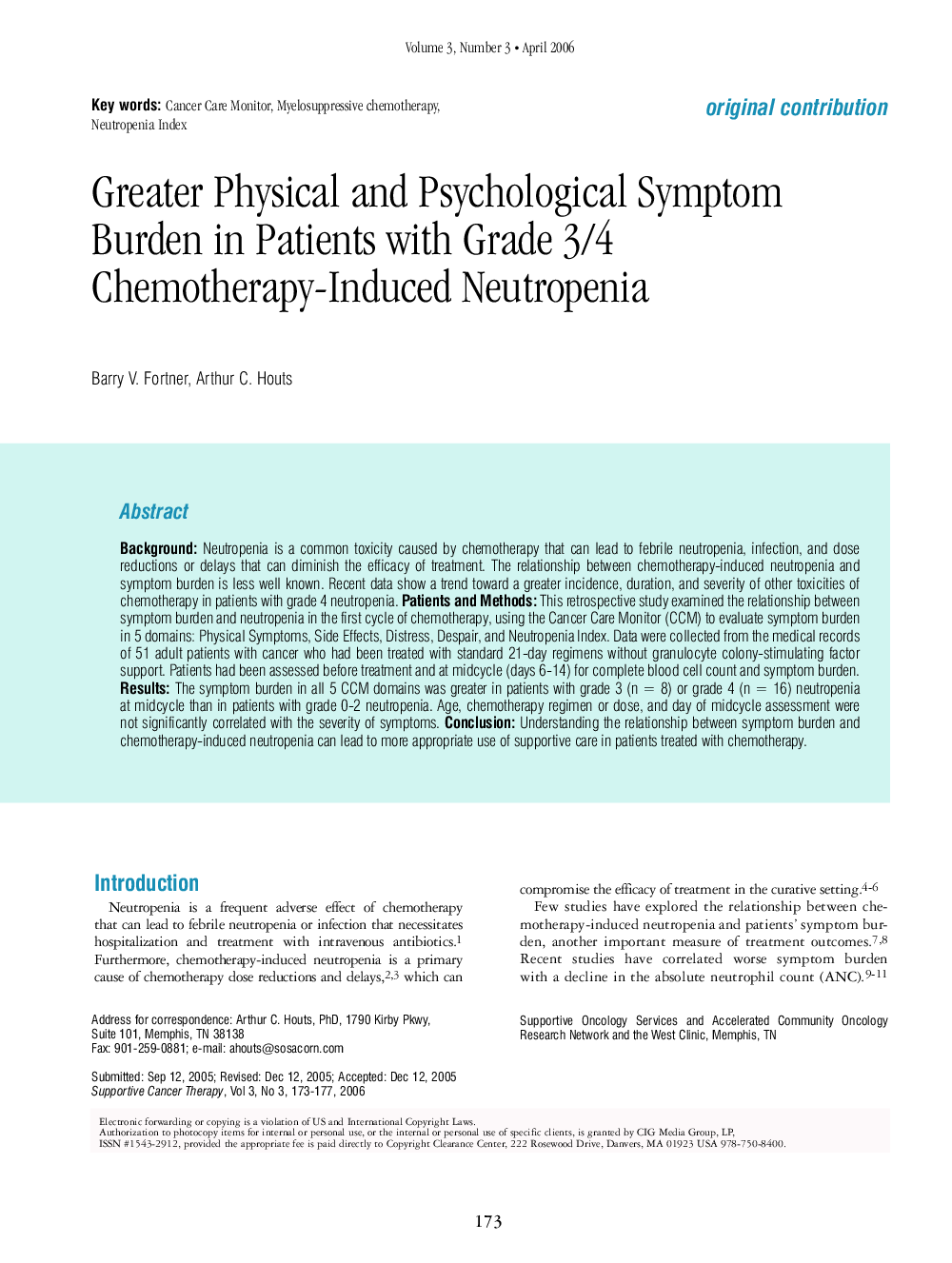| Article ID | Journal | Published Year | Pages | File Type |
|---|---|---|---|---|
| 3997635 | Supportive Cancer Therapy | 2006 | 5 Pages |
BackgroundNeutropenia is a common toxicity caused by chemotherapy that can lead to febrile neutropenia, infection, and dose reductions or delays that can diminish the efficacy of treatment. The relationship between chemotherapy-induced neutropenia and symptom burden is less well known. Recent data show a trend toward a greater incidence, duration, and severity of other toxicities of chemotherapy in patients with grade 4 neutropenia.Patients and MethodsThis retrospective study examined the relationship between symptom burden and neutropenia in the first cycle of chemotherapy, using the Cancer Care Monitor (CCM) to evaluate symptom burden in 5 domains: Physical Symptoms, Side Effects, Distress, Despair, and Neutropenia Index. Data were collected from the medical records of 51 adult patients with cancer who had been treated with standard 21-day regimens without granulocyte colony-stimulating factor support. Patients had been assessed before treatment and at midcycle (days 6–14) for complete blood cell count and symptom burden.ResultsThe symptom burden in all 5 CCM domains was greater in patients with grade 3 (n = 8) or grade 4 (n = 16) neutropenia at midcycle than in patients with grade 0–2 neutropenia. Age, chemotherapy regimen or dose, and day of midcycle assessment were not significantly correlated with the severity of symptoms.ConclusionUnderstanding the relationship between symptom burden and chemotherapy-induced neutropenia can lead to more appropriate use of supportive care in patients treated with chemotherapy.
